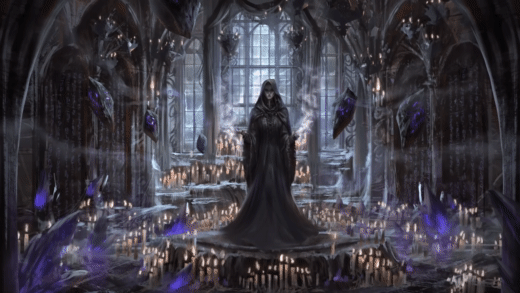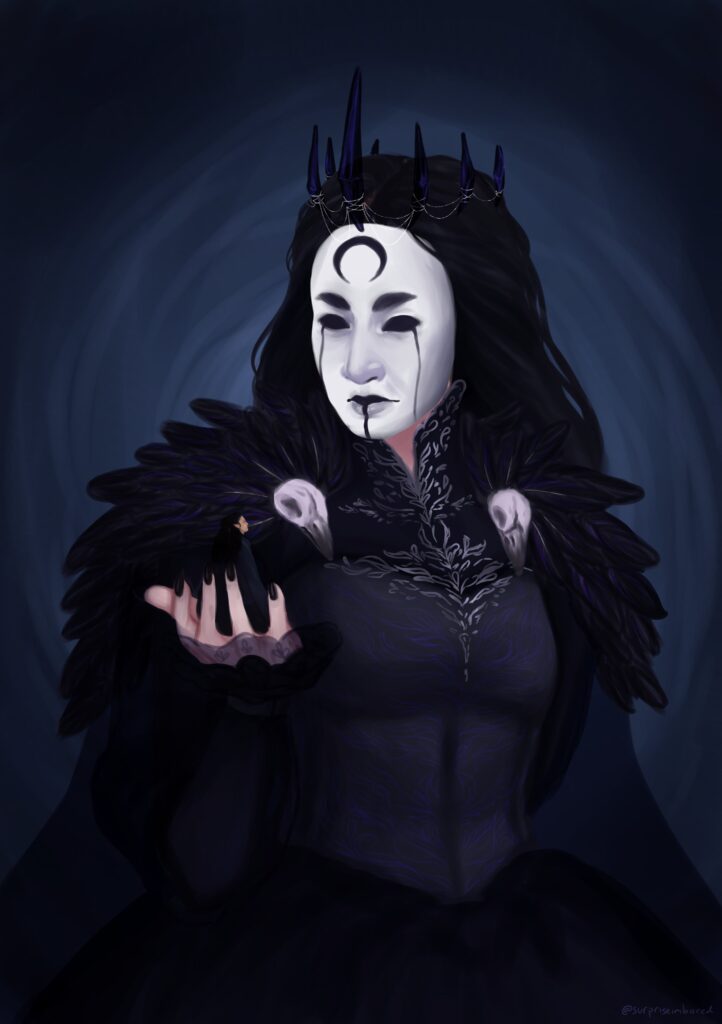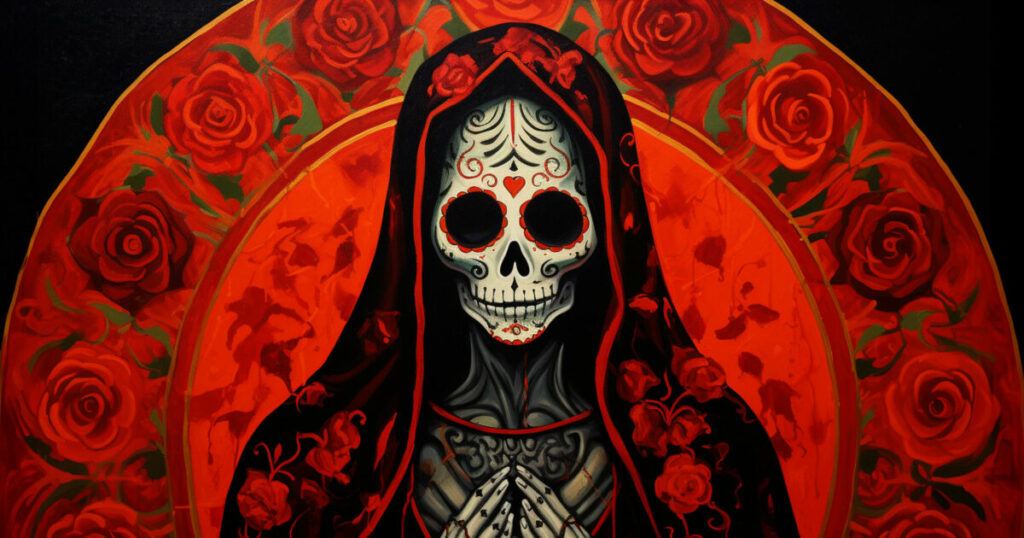Content Warnings: mentions of suicidal thoughts; depression (mention); death and dying; PTSD mentions

I have had clinical depression and anxiety for about 29 years. Three-fourths of my life, just about: depression shapes my brain and body more persistently than my own cells, as at least my cells die and renew every seven years. I am built out of pressure cookers and emotional trauma, and I say this not out of pride – mental health is still stigmatized immensely – but so people can understand how important it is for me to engage that part of me in a healthier way.
I did not believe I would make it to age twenty, then twenty-five. I spent a couple of years couch-surfing because I would rather risk homelessness, I would rather risk trying to live, than to return to situations where I knew I would want to die every day. Due to my longtime struggle with depression, as a result I have periods in my life where I was not the best to others either. While the process of living accumulates small regrets and things not chosen, or paths accidentally fallen into, a lot of depression advice talks about memory: remember when you were happy, when you were content, when you felt capable. At risk of sounding like an emo poem, the reality of my life is that I do live in memory, in shadows, but also trying to do what I can to value the life I have now. And it is a struggle, make no mistake.
There’s still stigma about mental health but there’s also more awareness of it. Therapy used to be a horrid whisper in the 1990s, and while there are still fears about it, there is more acceptance of a more holistic wellness approach. Medication can work for many people, even though it might take some time to figure out which one works best for that individual. Therapy can add to someone’s tools, and to help over time to add “tools” in a mental and emotional toolbox. But a surprising thing I found came from Vampire the Masquerade, and from the live-play series Critical Role. In this case, I want to draw attention to two things. The first is due to Critical Role: it originally used Pathfinder and then Dungeons and Dragons for its setting (Note 1) and as such used established deities in those settings when appropriate. Within both 5th edition D&D and Critical Role, the depiction of a newer deity called the Raven Queen (Note 2), is what I want to concentrate on here – as the Raven Queen’s domain in Dungeons and Dragons was established as between life and death, a domain of regret and memory (Note 3). The second is reframing the narrative; reframing is exactly what I did, in this case, and is often used under direction as a tool for dialectal therapy, among other therapeutic tools, though due to how ancient storytelling is, similar techniques are often used by individuals without realizing it. After all, if we can read stories about heroes overcoming odds, we start to believe that maybe we can overcome odds in our daily lives too. The adage that if we repeat a story long enough it becomes true is also borne out in marketing and propaganda; the case of the “hot coffee case” in the 1990s is often thought of as a non-therapeutic example of this, the power of story, where people often thought it was a frivolous lawsuit because that was the story McDonalds lawyers were so good at tapping into. Stories are powerful, and not just for entertainment to pass the time.

In Critical Role, the Raven Queen is depicted as neutral. She is not evil. She is enigmatic. She is terrifying also, associated as she is with death and as a result, confronting one’s own mortality, confronting one’s own regrets and farewells. In the depiction from Legend of Vox Machina (specifically Season 2, which is based on the Vox Machina campaign from Critical Role), the Raven Queen is associated with death, blood, and she is always seen masked, as well as associated with the corvids you might expect. But as the story progresses, the Raven Queen is seen more as one of the loneliest of deities – a former mortal who the other deities do not necessarily trust, new to the pantheons of deities.
There is a famous sequence in the story of the live-play, as Campaign 2 wraps to a close, of the new champion of the Raven Queen having snowdrop flowers in his path as he departs the mortal realm and says his goodbyes. This is alluded to in the Tal’Dorei Reborn campaign book set after the events, where the champion Vax’ildan has become a celestial figure guiding souls to whatever might be their next destination after death and tries to make it gentle whenever possible. While scary and shadowy, in the end, these figures are depicted as not evil. Dreadful, maybe, considering their domain; but like other fictional depictions such as Death in Neil Gaiman’s The Sandman books or series, or perhaps Sir Terry Pratchett’s depiction of Death from the Discworld books – the Raven Queen is seen as empathetic, if harsh.
This depiction of a fictional deity bears a lot of resemblance to the faith of Santa Muerte – while seen as terrifying or suspicious, the real-life faith of Santa Muerte encompasses many more than just people who are involved drug trafficking or law enforcement as might be the initial stereotype. LGBTQ+ people often also gravitate towards this faith, as death is the great equalizer in many cultures – the archetype of a constant, dread companion. While a deep discussion of Santa Muerte is not within the scope of this article, one of the best books in English is Dr Chesnut’s book “Devoted to Death: Santa Muerte the Skeleton Saint” and his articles.

I am not of color, but the archetype of Holy Death, of the shadow of death being a constant companion, is a powerful one. Especially for someone living with depression as long as I have. When you have been shaped by trauma and depression these things are familiar, even if my approach to them needs to change; what served me when I was ten years old, or what served me when I was homeless, is not necessarily the best approach for me now. Using fictional stories as a form of engagement is not new: much research around things like people who are fans of horror or crime procedurals have noted that engaging with even violent or traumatic material on the person’s own terms, in a safer space like fiction (TV, film, games), can be part of an effort to engage with their own concerns. The prime example of this effect is the film Godzilla, which used a lot of material that reminded its original Japanese audiences about air raid sirens, firebombing, and destruction thanks to the atomic bombings; but once Godzilla appeared, it went from traumatic war film to a safer space that it was science fiction, it was entertainment, it was a monster that could be defeated. That, and if your personal demon has a face and in a game you can punch it, there can be some catharsis. I don’t recommend exposure right out of the gate – the important thing here is that the individual retains their agency, engages with the material on their own terms. (Note 4)
I credit Critical Role’s depiction of the Raven Queen – and the inclusion of the figure in 4th and 5th edition of Dungeons and Dragons – as a way for me to engage with the world even when everything seems to be on fire. When I feel like a dumpster, myself- I have sought therapy, I have sought putting more tools into my toolbox for coping mechanisms. And while due to my history certain things might be considered “red flags”, and while there is still a tension between mental health care and affordability, a tension between my own agency and wanting to do things like writing advance health directives (Note 5), I have looked up the Order of the Good Death. I have researched the medieval European idea of memento mori, and while I do not need to be reminded that death comes for us all, and nor am I particularly Christian at all unlike much of the medieval reminders were framed, I can try to use these reminders to live life to the fullest. Instead of living to die, I can try to care about my life now. To tell people I love them, to try and reach out as I can. That, also, comes up sometimes in Critical Role: the bonds and connections we make with others, however unlikely, and that advice and encouragement can come from unlikely or unexpected sources.
It definitely has, in my case.
To add to this, in the past couple of years, there have been efforts to use directed tabletop gaming in therapeutic environments, often guided by a therapist or social worker who also holds the relevant licensures for their area (as well as often trainings in using such games for therapeutic reasons). The focus might range from improving social skills to addressing mental health or life changes, from an intended audience of kids and teens to an intended audience of adults. While my experience was not one of these directed experiences, the following resources may be useful to those wanting more information on directed therapy:
- The Bodhana Group: https://www.thebodhanagroup.org/
- Game to Grow:
- “Tabletop Therapy: How Dungeons and Dragons Can Improve Mental Health”. The Hub. Johns Hopkins University. https://hub.jhu.edu/2023/12/04/dungeons-and-dragons-therapy-group/
- “How to Replace Negative Thoughts”. Psych Central. https://psychcentral.com/depression/replacing-your-negative-thoughts
While the quotation attributed to G.K Chesterton about dragons and that dragons can be beaten would fit here, instead I’ll use another unexpected Critical Role quote: “Life needs things to live”. And despite all the everyday pains that life brings, Critical Role and D&D have helped me reframe my depression. It is still there, but it has gone from a terrible and persistent dragon to something of a known entity; gone from a nightmare to something I can put a label on, to something I can approach differently with the power of story.
-Kit Winter
Notes:
“Liebeck vs McDonalds’: the Hot Coffee Case”. American Museum of Tort Law. https://www.tortmuseum.org/liebeck-v-mcdonalds/
- Note 1: Critical Role is a live-play/actual-play which originally derived from a Pathfinder 1st edition game among the voice actors; they switched to using Dungeons and Dragons for their system and setting, modifying it to suit the world of Tal’Dorei. More information can be found via Darrington Press itself. There is also the Legend of Vox Machina animated series on Amazon Prime, which is adapting (as of this writing) two storylines from Campaign 1 of the live play (Vox Machina – Campaign 1). For more information on Critical Role and its various endeavors, including Darrington Press, please go to the official Critical Role site: https://critrole.com/
- Note 2: There are differences between how the Raven Queen is depicted from 4th edition to 5th However, the persistent lore depictions depict her as a mysterious figure in a shadowy realm associated primarily with regrets, memories, and the spaces between life and death. She is also associated with souls, even though a longstanding deity in D&D lore is also associated with being a neutral deity of death/the afterlives (Kelemvor).
- Note 3: This association is even called out in several official 5th edition adventures, such as the Riddle of the Raven Queen adventure, with “Shadowfell effects” – among which may include persistently feeling like all is hopeless, which is extremely evocative of depression and despair to those who already live with it.
- Note 4: This kind of approach requires agency and intention. Exposure therapy of just shoving someone dealing with depression and trauma into a dangerous situation often backfires, especially if it is not from the person themselves. This is also why content warnings are a thing, as are safety tools, in tabletop gaming (and growing more common in TV and video games as well).
Note 5: Writing wills and advance directives are typically included in good advice, but people with a history of depression are often flagged or involuntary put in crisis care if they pursue such advice, due to writing wills/advance health directives and related paperwork sometimes being a sign of immediate suicide plans.